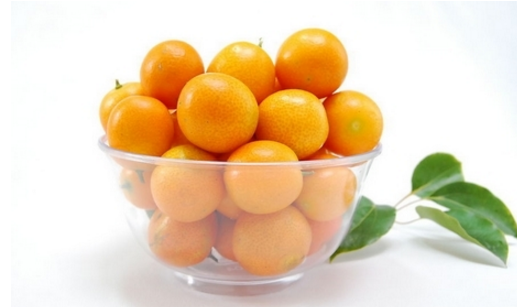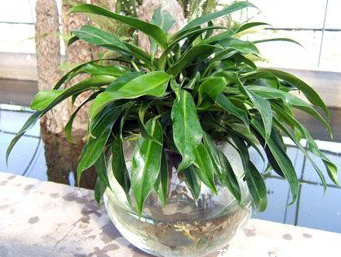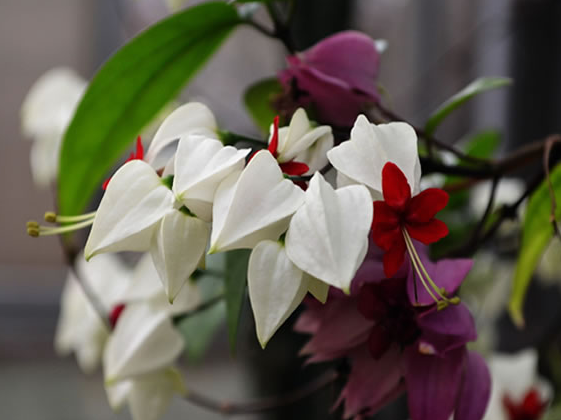Can kumquat seeds be eaten? how to grow small potted plants?
Kumquat, this is a lot of people like to eat, this kumquat is so attractive, kumquat seeds can be eaten? How to plant kumquat seeds in small pots:

Can kumquat seeds be eaten:
Orange seeds are edible.
But generally, they drink tea after drying, and orange seeds are rich in trace elements, so orange seeds can have the effect of dispelling cold. Generally, girls who are cold can often drink with orange seeds, which can effectively help recuperate the symptoms of body cold. in addition, orange seeds have a very good expectorant effect, if there is a baby cough and phlegm and can not use medicine, you can feed the baby more orange seed water. This is very good for eliminating phlegm, in addition, if there is usually loss of appetite, nausea and vomiting symptoms can also drink more orange seed water to recuperate.
How to plant kumquat seeds in small pots:
I. the choice of soil
When potted kumquat should be mixed with sandy soil, cake fertilizer and charcoal burned by weeds.
Second, keep moisture
Kumquat is a wet plant but avoid stagnant water, like wet soil, but not too much watering, easy to lead to root rot. Therefore, it is better to keep the basin soil moist during the growth period. Water consumption should be changed according to different seasons. Dry and windy in spring, it is necessary to spray water on the leaves once a day to increase air humidity; in summer, spray water 2 or 3 times a day, and spray water to the ground; but avoid spraying water during flowering to prevent rotten flowers and affect the results. In the rainy season, the pots should be dumped in time to avoid rotting roots; when put outdoors in summer, it is best to use bricks to cushion the flowerpots to facilitate drainage.
3. Sufficient light
It is necessary to make kumquat in places where there is plenty of light, one is to prevent the root of kumquat from rotting due to moisture-loving soil, and the other is photosynthesis. Without light, kumquat grows slowly, and it is easy to lose leaves, do not blossom or bear fruit.
Fourth, add fertilizer
Under normal circumstances, kumquat should be added with an appropriate amount of shallow sauce residue water and alum fertilizer every week, and more phosphate fertilizer should be added at the beginning of the fruit. these are the most common daily fertilizers for potted kumquat, and of course, quite similar fertilizers can be used according to their own conditions.
5. Pruning
Pruning is an important technical measure to make kumquat blossom fruitful. In order to make the tree beautiful and fruitful, each year, before the sap begins to flow, a re-pruning is carried out before the spring buds germinate, cutting off withered branches, disease and insect branches, over-dense branches and overgrown branches, leaving only 2-3 buds at the base of each branch and cutting off the rest.
VI. Prevention of diseases
Pay attention to the prevention of insect pests, appropriate spraying, such as copper sulfate, quicklime, water, bacilli and other potions, according to the instructions on the number of kumquat can be properly sprayed.
Kumquat seeds can be eaten, but also can be used to grow small potted plants, do not hurry to try.
Can kumquat seeds be eaten? how to plant kumquat seeds in small pots?
Many people eat kumquat will spit seeds, think spitting seeds is very troublesome, want to know kumquat seeds can be eaten? In fact, kumquat seeds are very good traditional Chinese medicine, can be eaten, in addition to kumquat seeds can also grow small potted oh, let's take a look.
Can kumquat seeds be eaten?
Orange seeds are edible.
But generally, they drink tea after drying, and orange seeds are rich in trace elements, so orange seeds can have the effect of dispelling cold. Generally, girls who are cold can often drink with orange seeds, which can effectively help recuperate the symptoms of body cold. in addition, orange seeds have a very good expectorant effect, if there is a baby cough and phlegm and can not use medicine, you can feed the baby more orange seed water. This is very good for eliminating phlegm, in addition, if there is usually loss of appetite, nausea and vomiting symptoms can also drink more orange seed water to recuperate.
How to plant small potted kumquat seeds
I. the choice of soil
When potted kumquat should be mixed with sandy soil, cake fertilizer and charcoal burned by weeds.
Second, keep moisture
Kumquat is a wet plant but avoid stagnant water, like wet soil, but not too much watering, easy to lead to root rot. Therefore, it is better to keep the basin soil moist during the growth period. Water consumption should be changed according to different seasons. Dry and windy in spring, it is necessary to spray water on the leaves once a day to increase air humidity; in summer, spray water 2 or 3 times a day, and spray water to the ground; but avoid spraying water during flowering to prevent rotten flowers and affect the results. In the rainy season, the pots should be dumped in time to avoid rotting roots; when put outdoors in summer, it is best to use bricks to cushion the flowerpots to facilitate drainage.
3. Sufficient light
It is necessary to make kumquat in places where there is plenty of light, one is to prevent the root of kumquat from rotting due to moisture-loving soil, and the other is photosynthesis. Without light, kumquat grows slowly, and it is easy to lose leaves, do not blossom or bear fruit.
Fourth, add fertilizer
Under normal circumstances, kumquat should be added with an appropriate amount of shallow sauce residue water and alum fertilizer every week, and more phosphate fertilizer should be added at the beginning of the fruit. these are the most common daily fertilizers for potted kumquat, and of course, quite similar fertilizers can be used according to their own conditions.
5. Pruning
Pruning is an important technical measure to make kumquat blossom fruitful. In order to make the tree beautiful and fruitful, each year, before the sap begins to flow, a re-pruning is carried out before the spring buds germinate, cutting off withered branches, disease and insect branches, over-dense branches and overgrown branches, leaving only 2-3 buds at the base of each branch and cutting off the rest.
VI. Prevention of diseases
Pay attention to the prevention of insect pests, appropriate spraying, such as copper sulfate, quicklime, water, bacilli and other potions, according to the instructions on the number of kumquat can be properly sprayed.
How to preserve kumquat
Method one
Pack it in a fresh-keeping bag and keep it for a long time without touching the air. But oranges must not be kept fresh in the refrigerator, which will speed up the decay of oranges. First lay the pine leaves (pine needles) at the bottom of the carton, then put the oranges, and then cover them with pine needles, and so on. It won't be a problem to keep it fresh for half a year, and it's full of moisture.
Method two
Kumquat is soft, so when preserving kumquat, you should pay attention to handle it gently, do not replay it, or it may damage it. If you want to prolong the shelf life of kumquat, remove the Platycodon grandiflorum of kumquat, and then put kumquat in a clean, dry, ventilated, shady place to avoid direct sunlight. Kumquat should be kept dry without moisture, otherwise kumquat may deteriorate due to moisture and prevent moth bites, otherwise kumquat will also deteriorate, affecting nutrition and taste.
Method three
Oranges bought in the market are tied up in fresh-keeping bags to prevent moisture from evaporating. If you tie it tightly with a fresh bag, it can be kept fresh for a period of time. Refrigerated with a safe bag, for some more but boxes of kumquat, the editor can teach you a soil method, which is really good and practical. Using garlic or garlic to mash or slice oranges to soak oranges in the basement with some leaves can keep oranges fresh for 4-5 months, with an average good fruit rate of about 95%.
The specific methods are:
1. Mash or slice the garlic leaves or garlic, put them in clear water, the proportion of garlic water is 1:10, soak for 12 hours, then boil to the boiling point. After cooling to room temperature, 2, soak the strictly selected, unbroken skin and pest-free citrus in garlic water for 10-15 seconds, take out the dry water, and then store it according to the conventional method.
3. Keep the oranges in a carton containing needles of Pinus massoniana and keep them in a cool and dry place for 3 months.
How to cultivate potted kumquat in pot culture
Kumquat potted plants have a certain ornamental value, whether they are foliage, flowers or fruit, and they are also common at home. So how to raise small kumquat potted plants? Let's take a look at the cultivation methods of potted kumquat.
How to cultivate small golden orange in pot
1. Flowerpot
Use a flowerpot, the size of the flowerpot according to the size of kumquat seedlings. Do not use plastic flowerpots, because they grow food to avoid plastic pollution.
2. Soil
Kumquat is suitable for growing in fertile, loose and acidic sandy loam. When potted, it is appropriate to use 4 parts of rotten leaf soil, 5 parts of sandy soil and 1 part of cake fertilizer. For example, use some bean cake fertilizer to bury the seedlings of fruit trees in the soil. Fruit tree seedlings can be bought at the local flower market or online. After planting, pour enough water and put it in the shade to slow down the seedlings and stabilize the roots.
3. Watering
Kumquat likes to be wet but avoid stagnant water, and the pot soil is easy to rot if the soil is too wet. Therefore, it is better to keep the basin soil moist during the growth period. It is dry and windy in spring. Spray water on the leaves once a day to increase air humidity. Spray water 2 or 3 times a day in summer, and spray water to the ground. But avoid spraying water during flowering to prevent rotten flowers and affect the fruit.
4. Sunshine
Kumquat likes a warm and humid climate with plenty of sunshine and should be placed in a sunny place during maintenance. You can leave it outdoors in winter and summer. However, if the light is not enough and the environment is shaded, it will often cause branches and leaves to grow, blossom and bear fruit less. Because kumquat likes cool climate in summer, or summer sunshine intensity is large, it is better to put it slightly in the shade at this time. It is advisable to keep room temperature without icing in winter. If the room temperature is too high and the plant is not fully dormant, it will grow weak in the following year and it is easy to drop flowers and buds.
5. Temperature
Kumquat likes a warm and refreshing growth temperature. When the temperature is lower than 10 degrees Celsius in late autumn, it should be moved indoors in time. In winter, the room temperature should be kept at 6 to 12 degrees Celsius. Too low temperature is easy to suffer frost damage, and too high will affect plant dormancy, which is not conducive to flowering and fruiting in the coming year. Of course, try not to move around, the fruit will fall because of vibration.
6. Fertilization
Potted kumquat requires proper management of water and fertilizer, applying a quick-acting phosphate fertilizer when the branches grow, such as calcium superphosphate, prevent branches and leaves from growing, promote flower bud differentiation and blossom and bear fruit. Kumquat can blossom and bear fruit many times in July and August, and the fruit of several times can coexist, but in order to keep the high yield of fruit, we should pay attention to the management of fertilizer and water. Apply more phosphate fertilizer after flowering, such as water from fish intestines, water from washing milk bottles, chicken manure and so on.
7. Pruning
Pruning is an important technical measure to make kumquat blossom fruitful. In order to make the tree beautiful and fruitful, cut off some of the old branches before the spring buds germinate, and the strong ones leave 2-3 buds, and each tree leaves 3 pruned one-year-old branches, which is beneficial to the spring shoot germination. When the new buds grow to 15-20 cm, the branches will be plump.
8. Insect pests
The branches and leaves of kumquat are often harmed by shell insects, red spiders and chicken dish larvae, in which the damage is more common, which occurs from April to May, and can be sprayed with 1000 times of acephate, and small hair brushes can also be used to brush off pests.
How to plant kumquat seeds in small pots
Step 1: get the golden orange seeds. The golden orange seed is obtained from the fresh kumquat bought in the market, and you just stay when you eat the orange.
Step 2: keep it clean. The collected golden orange seeds need to be kept clean to remove the pulp adhered to the surface.
Step 3: soak the collected golden orange seeds in clean water and change the water once a day to make the seeds have enough water. You need to soak in the water for about a week. Be sure to change the water every day to keep the seeds clean.
Step 4: after soaking the golden orange seeds for a week, take out the seeds, remove the thin skin from the surface of the orange seeds with tweezers, do not hurt the inside of the orange seeds, and carefully remove the epidermis, which is conducive to the rapid germination and growth of the seeds.
Step 5: after the epidermis is removed, prepare a basin of nutritious soil. I take the soil directly from the vegetable field. Bury the orange seeds about two centimeters under the ground, then water them every day and wait patiently for the seeds to germinate. You'll be able to grow beautiful little bonsai.
- Prev

How long does the water culture of ten thousand years old change the water? what if the leaves turn yellow and droop?
Evergreen, this is a lot of people like breeding, this evergreen is green all the year round, how long does it take to change water? Evergreen leaves yellow and drooping how to do: evergreen hydroponics how long to change water: 1, when choosing evergreen
- Next

How many times a year does Longtuzhu blossom but not blossom?
Longtuzhu perennial evergreen vine, flowering is relatively long, very suitable for pot culture and ornamental. Many people are attracted by the dragon spitting bead flowers, so they take the dragon spitting bead as an ornamental plant at home, so how many times a year do the dragon spit beads bloom? What if it doesn't blossom? then let's go and have a look. How many times a year does the dragon spit beads bloom?
Related
- Fuxing push coffee new agricultural production and marketing class: lack of small-scale processing plants
- Jujube rice field leisure farm deep ploughing Yilan for five years to create a space for organic food and play
- Nongyu Farm-A trial of organic papaya for brave women with advanced technology
- Four points for attention in the prevention and control of diseases and insect pests of edible fungi
- How to add nutrient solution to Edible Fungi
- Is there any good way to control edible fungus mites?
- Open Inoculation Technology of Edible Fungi
- Is there any clever way to use fertilizer for edible fungus in winter?
- What agents are used to kill the pathogens of edible fungi in the mushroom shed?
- Rapid drying of Edible Fungi

